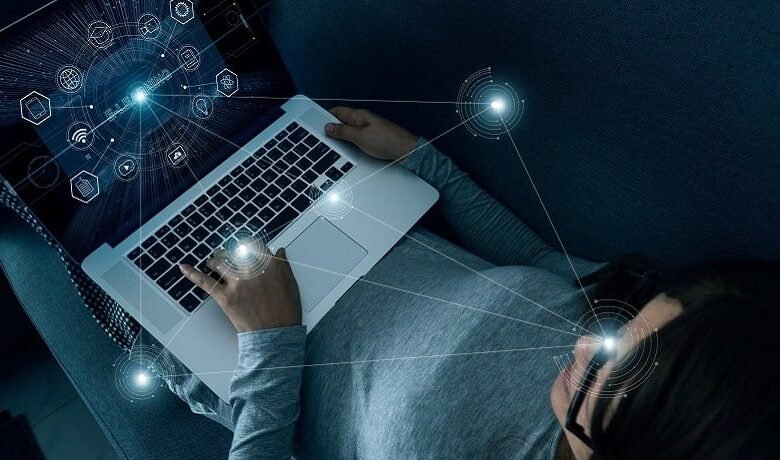
Think about a classroom.
What do you get? Let me guess! Is it a teacher standing in front of the chalkboard addressing a classroom full of students sitting in rows of desks?
Correct?
Well, this is how most of the educational institutions work. They employ the traditional design of a classroom. However with the changing landscape of education over the past two years, educational institutions had no choice but to switch to online learning in virtual classrooms.
Though it was a forced development, it has proven to be efficient in opening the doors for new opportunities in the educational ecosystem. Below we we learn how virtual learning has transformed the educational landscape. But first, let’s learn what is a virtual classroom.
What is a Virtual Classroom?
A virtual classroom is an online school environment that is facilitated by a digital learning platform like Virtual Reality.
How is it different from the traditional classroom?
Well, in a virtual classroom teachers and students can interact with each other from the comfort of their homes.
This means that no matter where the teachers and students are, a virtual classroom allows them to connect and learn without having to physically travel to the school.
This makes cost-effective quality education reach to the students around the globe easily.
Wait! Its not over yet.
Virtual classrooms have a lot of benefits over traditional physical classrooms that has changed the way we learn and engage with the subject. Here are some of the way with which virtual learning has transformed the educational landscape:
Engagement and Attention
When it comes to virtual classrooms, one of the significant advantages is its ability to enhance student engagement and attention.
At one place where traditional classroom settings often left students struggling to captivate knowledge that lead to reduced focus and retention.
On the other side with the use of technologies like VR in virtual classrooms, students can be transported to a fascinating virtual worlds that stimulate their senses to explore different aspects of a concept.
Not only this, it helps them in fostering active participation.
Within the virtual classroom, the immersive experience grabs the attention of the students, making the learning process more enjoyable and effective.
Impressive. Isn’t it?
Experiential Learning
The students can be future ready only if they have the firsthand experiences.
Unfortunately, this is not possible with traditional learning classrooms. However, virtual classrooms with its powerful approach of experiential learning enables the students to acquire knowledge through firsthand experiences.
It provides students with a unique realistic simulations that allows them to actively participate in engaging simulated learning experiences.
So, whether it is about exploring the roads of ancient civilizations, conducting research, performing science experiments, or practicing complex skills, with these virtual learning classrooms everything is possible for the students.
Virtual reality allows students to learn by doing, promoting a deeper understanding of the subject matter.
Customizable Learning Environments
Every individual has a different learning style but with the traditional educational system it is difficult for the educators to look for them separately.
VR for higher education provides the opportunity to create customizable learning environments tailored to specific educational objectives.
With the power of immersive learning with VR, teachers can design different virtual scenarios. Not only this, but they can adapt the content to individual student needs, and personalize their learning experiences.
Such a flexibility to create different learning environments, allows the educators to cater to various learning styles, enabling them to address the unique requirements of each student.
Collaboration and Interaction
Collaboration and interaction are the important aspects of education as it promotes critical thinking and social skills development.
The virtual learning environment can facilitate collaborative learning experiences by enabling students to interact with each other and with the virtual environment.
Through shared VR experiences, students are allowed to collaborate on projects. They can solve problems together, and gain insights from diverse perspectives.
Such experiences helps them in fostering a sense of teamwork and cooperation.
Also Read:- Web Development Firms
Overcoming Physical Limitations
Traditional classrooms have present a lot of physical limitations and these limitations can hinder certain type learning experiences.
For instance, consider a scenario where students are conducting experiments in physical lab. These students may be restricted by equipment availability or safety concerns.
Now think of them conducting experiments with virtual equippments in VR. Yes, VR, one of the amazing trends in educational technology, can overcome these limitations of physical labs.
Asking how?
By creating virtual labs. Simple. Isn’t it?
With virtual reality labs students can conduct experiments without any practical constraints. It opens up new possibilities for hands-on learning, transcending the boundaries imposed by physical constraints.
Conclusion
Virtual learning classrooms has changed the way we used to deliver and gain knowledge by making it more engaging, experiential, and collaborative.
Its immersive experience can bring the change we want to see in the way students learn and teachers teach. With the right infrastructure and responsible implementation, virtual learning has the power to create a brighter, more accessible future for education.
The chalkboard may be a thing of the past, but the possibilities of virtual learning are limitless.
Read More:- Blockchain companies in USA


